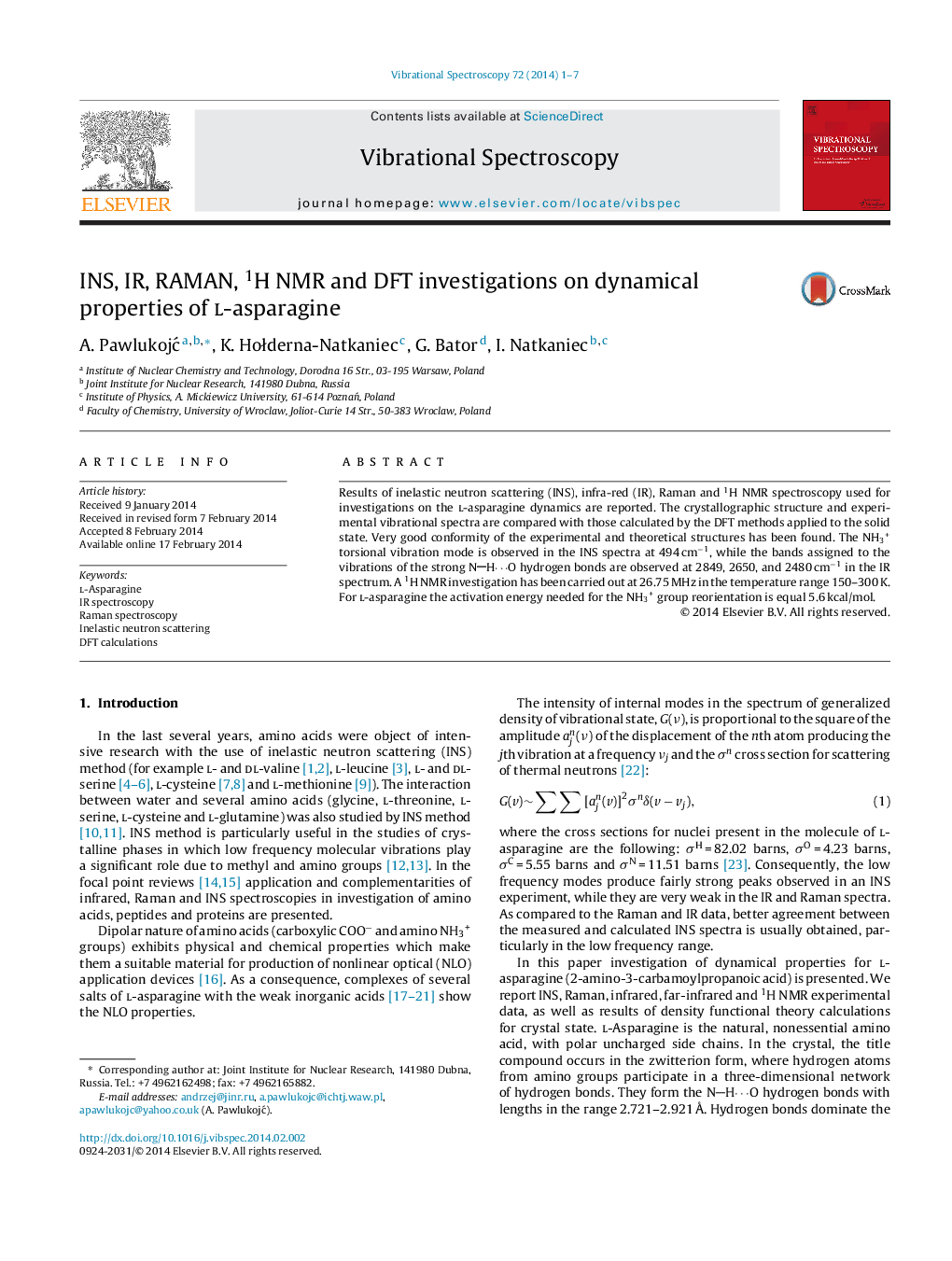| Article ID | Journal | Published Year | Pages | File Type |
|---|---|---|---|---|
| 1251818 | Vibrational Spectroscopy | 2014 | 7 Pages |
•l-Asparagine was investigated by INS, IR, Raman and 1H NMR spectroscopy.•DFT calculations for solids state model were performed.•The NH3+ torsional vibration mode is observed in the INS spectra.•Activation energy for the NH3+ group reorientation is obtained.
Results of inelastic neutron scattering (INS), infra-red (IR), Raman and 1H NMR spectroscopy used for investigations on the l-asparagine dynamics are reported. The crystallographic structure and experimental vibrational spectra are compared with those calculated by the DFT methods applied to the solid state. Very good conformity of the experimental and theoretical structures has been found. The NH3+ torsional vibration mode is observed in the INS spectra at 494 cm−1, while the bands assigned to the vibrations of the strong NH⋯O hydrogen bonds are observed at 2849, 2650, and 2480 cm−1 in the IR spectrum. A 1H NMR investigation has been carried out at 26.75 MHz in the temperature range 150–300 K. For l-asparagine the activation energy needed for the NH3+ group reorientation is equal 5.6 kcal/mol.
